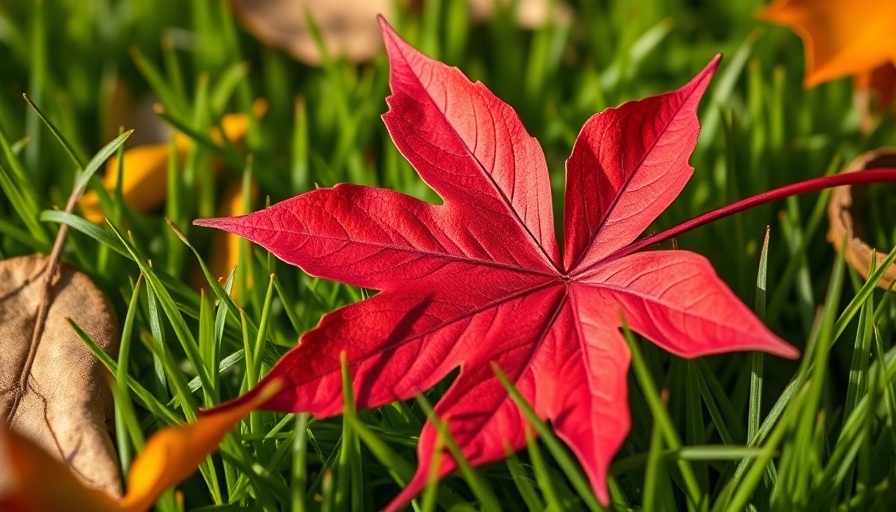
Fall Fertilization: A Crucial Step for Your Lawn’s Health
As the warm days of summer give way to the refreshing chill of autumn, homeowners are reminded of an important task: fall lawn fertilization. This often-overlooked chore not only prepares your lawn for winter but also sets the stage for a vibrant, lush green yard come spring. By understanding the significance of this seasonal care, you can help ensure your lawn is healthy and ready to thrive in the face of temperature shifts and weather changes.
The Science Behind Fall Fertilization
The key to understanding why fall fertilization is necessary lies beneath the surface of your lawn. As temperatures dip, grass plants begin reallocating their energy from top growth to strengthening their root systems. By providing essential nutrients late in the growing season, homeowners set a solid foundation, enabling their grass to develop deep, robust roots.
A lawn enriched with the right nutrients not only withstands the harshness of winter but also stands a better chance against disease and drought. An effectively fertilized lawn balances its nitrogen intake, ensuring healthy foliage growth while boosting phosphorus for root development and potassium for overall resilience.
Timing Your Fertilization Right
Whether you are applying fertilizer in a suburban lawn or a small commercial property, timing is everything. The window for optimal fall fertilization generally stretches from late August to early November, with mid to late October being the sweet spot for most climates.
Failing to adhere to the right timeline can leave your lawn unprepared for the seasonal changes ahead. Applying too late may result in ineffective growth due to colder ground temperatures, while applying too early can lead to nutrient loss from excessive heat and moisture.
Choosing the Ideal Fertilizer
When selecting fall fertilizers, homeowners should focus on the NPK ratio, noting the crucial role each element plays:
- Nitrogen (N): Supports foliage growth and helps your lawn consume sunlight efficiently.
- Phosphorus (P): Vital for robust root development and helps improve overall health.
- Potassium (K): Strengthens cell function, enabling grass blades to survive cold and reduce susceptibility to diseases.
Opt for a fertilizer with a higher nitrogen ratio during fall. This energy will assist in root growth, preparing your lawn to endure harsh weather conditions and emerge beautifully next spring.
Effective Application Tips
Applying fertilizer may seem straightforward, but several key steps can improve your success:
Measure Your Lawn
Before applying any product, accurately measure the area of your lawn. This ensures that you apply the correct amount of fertilizer. Over-fertilizing can burn your grass, leading to unsightly patches and excessive growth that might be hard to manage come spring.
Utilize the Right Equipment
A rotary broadcast spreader is an ideal tool for even distribution throughout your yard. This thorough coverage maximizes the effectiveness of your fertilization efforts.
Mind the Timing
Apply the fertilizer after the last growth spurts but when the grass is still green. Avoid applying when the ground is frozen, as nutrients won’t absorb effectively.
Don't Miss Out! Is It Too Late?
As autumn progresses, homeowners may worry about whether it's too late for fall fertilization. The answer largely depends on your climate and the current lawn conditions. If your lawn still has some luster and isn’t showing signs of dormancy, you can still apply a late-season fertilizer before ground temperatures drop significantly.
Seasonal Maintenance: Beyond Fertilization
While fall fertilization is critical, it is also an umbrella under which other seasonal care tasks reside. This includes:
- **Fall Leaf Removal and Aeration:** Regularly clearing leaves not only makes your yard look tidy but prevents suffocation of the grass below. Aeration, either with a core aerator or other tools, improves nutrient uptake in compacted soil.
- **Winter Plowing Readiness:** For property managers and homeowners with significant snow needs, ensuring you have a reliable snow removal strategy ready as fall transitions into winter is vital.
- **Keeping Track of Summer Drought Care:** Understanding what aspects your lawn may have struggled with over the summer helps you address those during fall maintenance.
 Add Row
Add Row 
 Add
Add 


 Add Row
Add Row  Add
Add 
Write A Comment